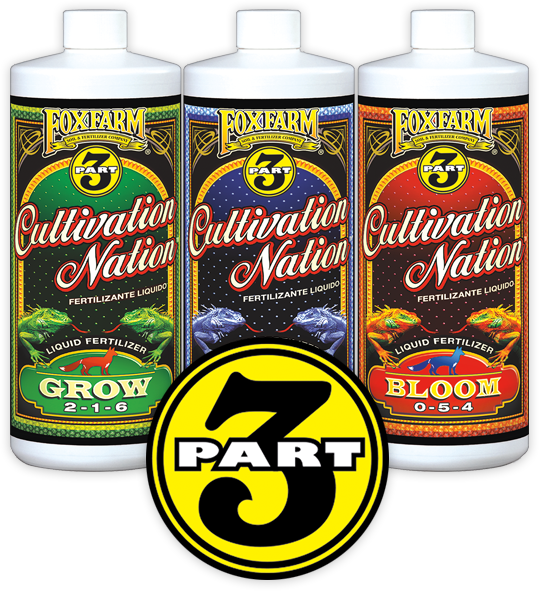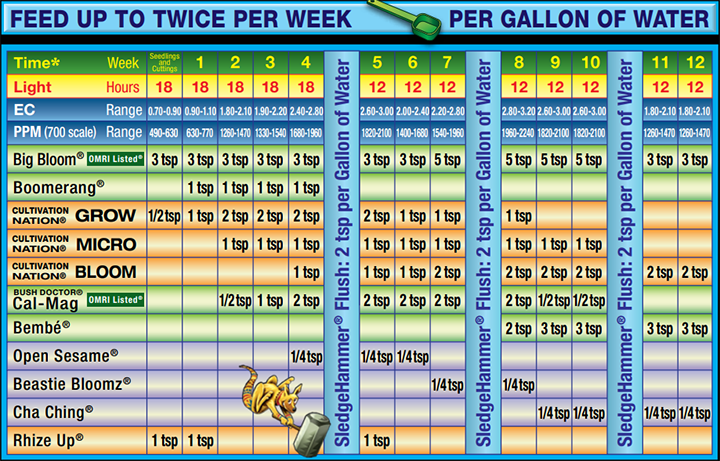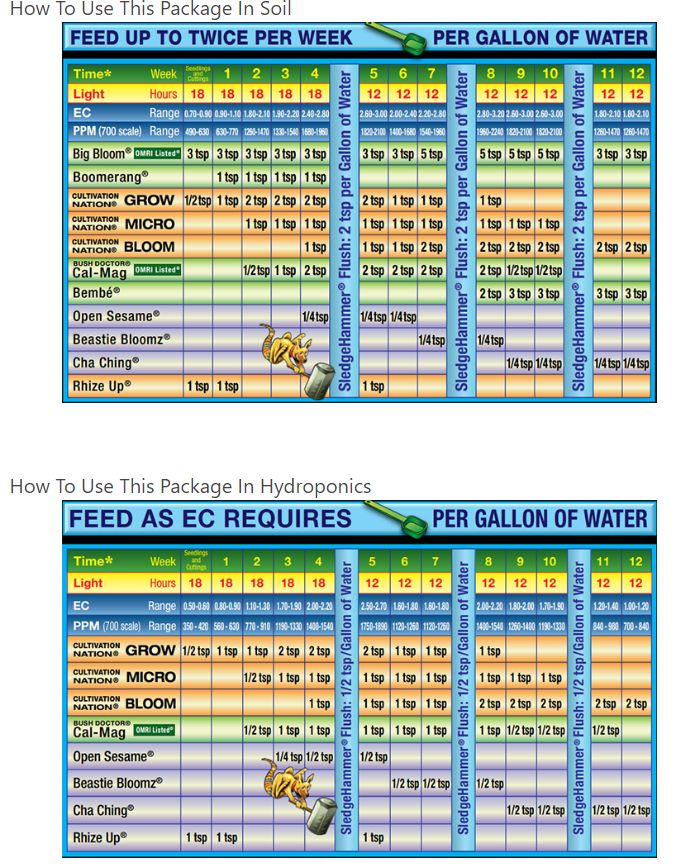Key Takeaways
- Understand the basics of the Fox Farm Cultivation Nation feeding chart to maximize plant growth.
- Learn the significance of proper feeding schedules for different stages of plant development.
- Discover how to adjust nutrient mixtures for vegetative and flowering stages.
- Explore advanced techniques for both hydroponic systems and soil gardens.
- Gain insights into environmental factors and pH levels that affect plant health and nutrient uptake.
Unlock the Potential of Your Garden: A Quick Guide to Fox Farm Feeding
Gardening is both an art and a science, and just like any good artist, you need the right palette to create your masterpiece. Fox Farm’s Cultivation Nation feeding chart is your color guide to a vibrant, thriving garden. Let’s dive into the world of plant nutrition and unlock the secrets to lush growth and bountiful blooms.
What is Fox Farm Cultivation Nation?
Fox Farm is a renowned name in the gardening community, known for its high-quality fertilizers and soil mixes. The Cultivation Nation line is their solution to simplify plant nutrition with a system that’s both easy to understand and apply. It includes a series of liquid and dry fertilizers that work in harmony to support your plants from seedling to harvest.
Why a Feeding Chart Matters
Just like us, plants have different dietary needs at different stages of their lives. A feeding chart ensures that your green friends get exactly what they need, when they need it. Without a proper feeding schedule, you could either starve your plants or love them to death with too much of a good thing. And trust me, nutrient burn is as real as sunburn – you don’t want that for your plants.

“Cultivation Nation – FoxFarm Soil …” from foxfarm.com
Mastering the Fox Farm Feeding Schedule
Now, onto the main event – the Fox Farm feeding schedule. Think of it as a calendar for your plants’ meals. It’s a straightforward guide that outlines when and how to apply each product in the Cultivation Nation line. Following this schedule is like having a GPS for gardening – it helps you navigate through the growing season with confidence.
Understanding the Cultivation Nation Feeding Chart
The feeding chart is divided into three key parts: Grow, Micro, and Bloom. Each plays a crucial role in the development of your plants.
- Grow provides the foundation, promoting vigorous vegetative growth.
- Micro includes essential micronutrients that plants need in smaller quantities.
- Bloom supports the flowering and fruiting stages, where you reap what you sow.
Vegetative Stage: Starting Strong
The vegetative stage is all about setting the stage for later success. During this phase, your plants are putting down roots and building the framework for future flowers or fruits. The Grow formula is your go-to here, delivering nitrogen and other key nutrients that encourage lush, leafy growth.
Here’s a simple feeding tip: start with half-strength doses for young plants and gradually increase to full strength as they mature. This approach helps avoid overwhelming your tender seedlings with too much too soon.
Flowering Stage: Optimal Nutrients for Bloom
As the season progresses and your plants enter the flowering stage, it’s time to switch gears. Now, phosphorus and potassium take center stage, aiding in the development of buds and blooms. The Bloom formula is specially designed to provide these nutrients at the right time and in the right amounts.
Remember, consistency is key. Stick to the schedule, and you’ll be well on your way to a garden that’s not just surviving, but thriving.

“Cultivation Nation – FoxFarm Soil Feeding Schedule …” from hydrobuilder.com
Flower Power: Boosting Your Blooms with Fox Farm
When it comes to your garden’s performance, think of Fox Farm as the coach that leads your plants to the championship. With the right feeding schedule, you’re setting your garden up for a season of success, filled with vibrant colors and hearty harvests. But to truly harness the power of these nutrients, you need to understand how to adjust them throughout your plants’ lifecycle.
Nutrient Mixtures for Different Stages
Each stage of plant growth demands a different nutrient mixture. During the vegetative stage, nitrogen is the MVP, helping to build strong stems and lush foliage. As you transition to the flowering stage, phosphorus and potassium take the lead, fueling the development of those beautiful blooms. Fox Farm’s feeding chart outlines the perfect mix for each stage, ensuring your plants get exactly what they need at exactly the right time.
To give you an idea of how this works in practice, let’s look at a typical nutrient adjustment as your plants mature.
- Weeks 1-2: High nitrogen, lower phosphorus, moderate potassium
- Weeks 3-5: Balanced N-P-K for transition
- Weeks 6+: Reduced nitrogen, high phosphorus, and potassium for flowering
Customizing Your Feeding Approach
While the Fox Farm feeding chart provides an excellent baseline, remember that each garden is unique. Factors like plant variety, climate, and soil condition may require you to tweak the feeding regimen. Pay attention to your plants – they’ll tell you if they need more or less of something. Yellowing leaves? They might be craving more nitrogen. Lackluster blooms? A phosphorus boost could be in order.
Pro Tips for Flower Growth Success
Now, let’s get into some pro tips that can elevate your garden from good to great. These nuggets of wisdom are the difference between a garden that’s simply surviving and one that’s thriving with life and color.
Most importantly, always start with a clean slate each season. This means flushing out any residual nutrients in your soil or hydroponic system before starting a new feeding schedule. It’s like giving your plants a fresh plate at every meal.
Also, don’t forget to keep a close eye on your plants’ response after feeding. Adjust as necessary, and always err on the side of caution – it’s easier to add more nutrients than to take them away.
The Role of pH in Nutrient Absorption
One critical aspect often overlooked is the pH level of your soil or hydroponic solution. If the pH is out of whack, your plants won’t be able to take in nutrients efficiently, no matter how perfectly you’ve mixed them. Aim for a pH between 6.0 and 7.0 for soil gardens and slightly lower for hydroponic setups.
Keep a pH meter handy and test regularly. If you need to adjust, use pH up or down solutions sparingly, and always retest after application.
Environmental Factors Affecting Flower Growth
Besides the feeding schedule and pH levels, environmental factors play a significant role in your plants’ health. Temperature, humidity, light levels, and even airflow can all influence how your plants use nutrients. For instance, higher temperatures can increase nutrient uptake, but they can also raise the risk of nutrient burn.
Therefore, always monitor your garden’s environment and adjust your feeding accordingly. For example, during a heatwave, you might need to increase watering to help your plants cope with the stress and prevent nutrient lockout.
Giving Your Plants the Best: Advanced Feeding Techniques
For those who want to go the extra mile, there are advanced feeding techniques that can significantly impact your plants growth and yield.
For hydroponic gardeners, mastering the art of nutrient solution mixing is essential. You’ll be creating a cocktail of nutrients that your plants can access directly. This means you need to be precise with measurements and consistent with monitoring.

Hydroponic Systems: Tailoring Nutrient Solutions
In hydroponics, the feeding schedule is more than just a guideline – it’s a recipe for success. Because your plants’ roots are submerged directly in the nutrient solution, any imbalance is immediately felt. Use the Fox Farm chart as your starting point, but don’t hesitate to make small adjustments based on your plants’ feedback.
Keep a log of every change you make to the nutrient solution, along with notes on how your plants react. This record will be invaluable over time, helping you to refine your approach and achieve even better results with crop growth analytics.
Soil Gardens: Timing and Techniques for Top Dressing
If you’re working with soil, one of the best ways to supplement your plants’ diet is through top dressing. This involves spreading a thin layer of solid fertilizer on top of the soil, which then slowly breaks down and enriches the soil with nutrients.
Top dressing is typically done a few times during the growing season.
- At the start of the vegetative stage to kickstart growth
- Just before the flowering stage to support bud formation
- Midway through the flowering stage to maintain nutrient levels
Choose a balanced, slow-release fertilizer from the Fox Farm line for best results. This method is less immediate than liquid feeding, but it provides a steady supply of nutrients over a longer period, which can be especially beneficial for heavy feeders or larger plants.
FAQ on Cultivation Nation Feeding By Fox Farm
With all this information in hand, you might still have some burning questions. Let’s tackle a few common queries that garden enthusiasts often have when they begin working with Fox Farm products and the Cultivation Nation feeding chart.
How often should I use Fox Farm nutrients?
Frequency is crucial when it comes to feeding your plants. Fox Farm nutrients are typically applied once a week, but this can vary based on the specific product and the stage of growth your plants are in. Always start with the recommended schedule provided by Fox Farm and observe how your plants respond. If they show signs of nutrient deficiency or excess, adjust the frequency accordingly. Remember, less is often more when it comes to plant nutrition.
Can I use the Cultivation Nation Feeding Chart for non-Fox Farm products?
While the Cultivation Nation feeding chart is designed for Fox Farm products, the basic principles of plant nutrition apply across different brands. If you choose to use non-Fox Farm products, use the chart as a general guideline and pay close attention to the N-P-K ratios and micronutrient content of the products you’re using. Adjust the quantities and frequency to match the needs of your specific plants and growing conditions.
What are the signs of nutrient burn in plants?
Nutrient burn is a common issue that arises when plants are given too much fertilizer. Signs include, excessive fertilization symptoms.
- Browning or yellowing of leaf tips and edges
- Leaves that appear crispy or scorched
- Stunted growth or wilting
If you notice any of these symptoms, reduce the amount of fertilizer and flush your soil with clean water to help remove excess nutrients. It’s crucial to act quickly to prevent further damage to your plants. For more information on proper fertilization, check out the Cultivation Nation® 2-Part Feeding Program.
Do I need to adjust the feeding schedule for indoor vs outdoor plants?
Yes, indoor and outdoor plants have different needs, primarily due to variations in light, temperature, and other environmental factors. Indoor plants may require less frequent feeding because they are often in a more controlled environment with less intense light. Outdoor plants, on the other hand, might need more nutrients to cope with the stress of direct sunlight and fluctuating temperatures. Always monitor your plants and adjust the feeding schedule to suit their environment.
Below you can see the difference between soil and hydroponics. Soil schedule can be used inside or outside. Remember that the weather outside can effect your schedule due to rain or excessive hot days that need more watering.

“Images provided by HydroBuilder.com“
Can Fox Farm products be used for organic gardening?
Fox Farm offers a range of organic products that are suitable for organic gardening. However, not all Fox Farm products are certified organic, so it’s important to check the labels if organic gardening is your goal. The company’s commitment to quality and sustainability makes it a favorite among organic gardeners looking for reliable, effective solutions.
Understanding the proper use of the Fox Farm feeding schedule is crucial for the success of your flower growth. It’s not just about the amount of food, but also the right timing and understanding the needs of your plants during different growth stages. Overfeeding can lead to nutrient burn, while underfeeding can leave your plants malnourished. The feeding chart is designed to give your flowers the right amount of nutrients at the right time, ensuring lush, vibrant blooms.
